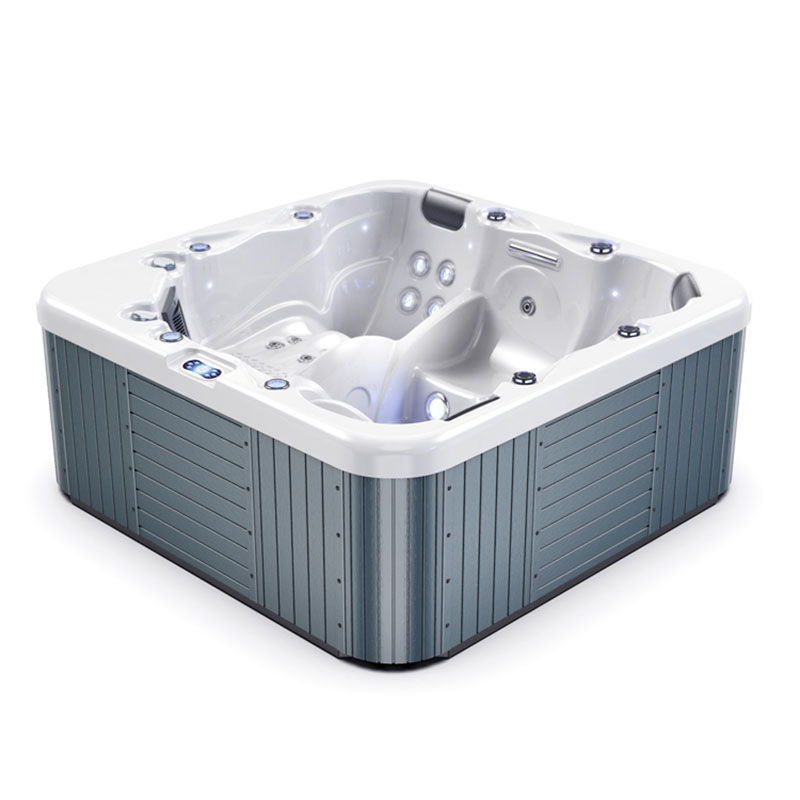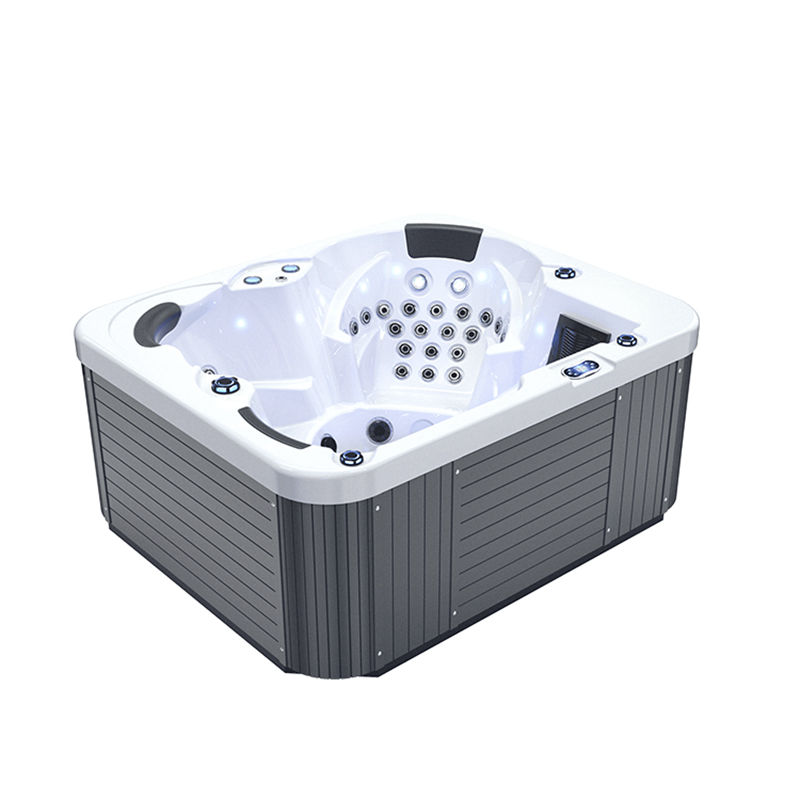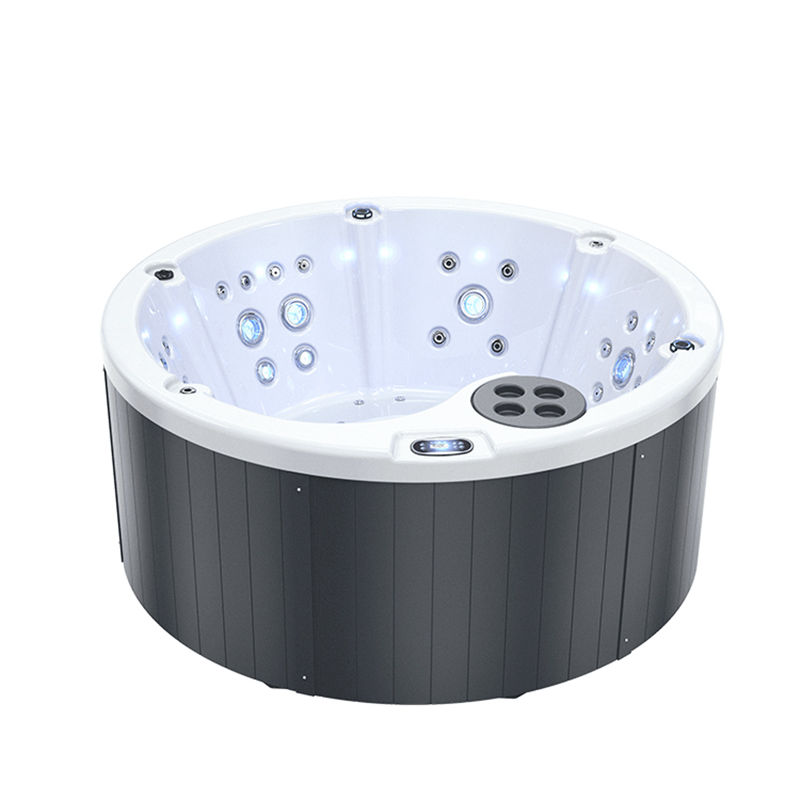There is a very important but often overlooked chemical component in the maintenance of whirlpool spa tubs - cyanuric acid (CYA), which is a key element in maintaining water quality balance and ensuring disinfection effectiveness. Although cyanuric acid can effectively prolong the disinfection effect of chlorine when used properly, excessive cyanuric acid can cause problems and even affect the quality of the bathtub water.
Faced with the situation of excessive cyanuric acid levels, many people will ask the same question: Do I need to drain my whirlpool spa tub? This article will discuss in detail the role of cyanuric acid, the harm of excessive levels, and the coping strategies.
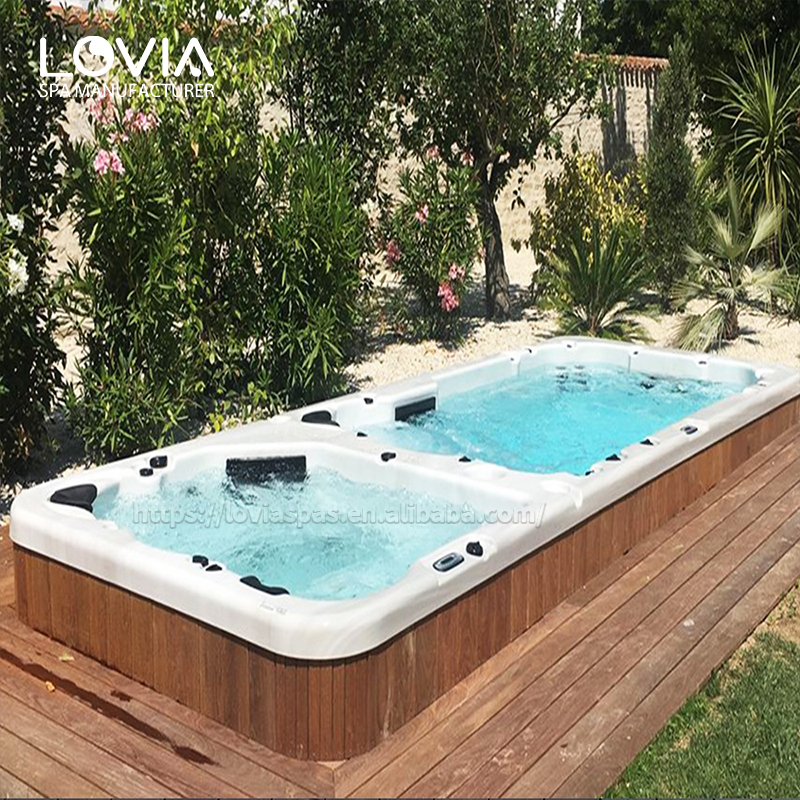
What is cyanuric acid?
Cyanuric acid (CYA) is a chemical stabilizer that is commonly used to protect chlorine in water, especially in outdoor whirlpool spa tubs or swimming pools. Chlorine is the main chemical agent for water disinfection, which can kill bacteria, viruses and other harmful microorganisms in water. However, chlorine is very easy to decompose in sunlight, especially under ultraviolet light, and the effectiveness of chlorine will decrease rapidly, causing the water to lose the necessary disinfection ability. Cyanuric acid can combine with chlorine to form a more stable compound, which can prolong the retention time of chlorine and prevent it from being quickly decomposed by ultraviolet light.
What are the sources of cyanuric acid?
Cyanuric acid generally enters the whirlpool spa tub in three ways:
1. Trichloroisocyanuric acid or dichloroisocyanuric acid: This is the most common form of chlorine disinfectant, especially in home whirlpool spa tubs. These chlorine preparations naturally contain cyanuric acid, and cyanuric acid will enter the water every time chlorine is added.
2. Independent cyanuric acid additives: In some cases, users will use cyanuric acid additives alone to stabilize the effect of chlorine. It is usually used for the initial adjustment of whirlpool spa tub water quality.
3. Natural accumulation of water quality: Since cyanuric acid cannot disappear by evaporation and can only be reduced by draining and replacing water, it will accumulate in whirlpool spa tub water over long-term use.
What are the hazards of excessive cyanuric acid levels?
Although cyanuric acid is very beneficial in appropriate concentrations, when its content is too high, it will have a negative impact on the water quality and disinfection effect of the whirlpool spa tub. The upper limit of cyanuric acid content is usually recommended to be between 30 and 50 mg/L. Exceeding this range may cause the following problems:
1. Reduced disinfection effectiveness of chlorine
The main function of cyanuric acid is to protect chlorine from being destroyed by ultraviolet rays, but too much cyanuric acid will bind too tightly to chlorine, causing the disinfection effectiveness of chlorine to be greatly reduced. When the concentration of cyanuric acid is too high, even if the chlorine content in the whirlpool spa water is normal, it cannot effectively play its disinfection role, resulting in bacteria and other microorganisms in the water cannot be completely removed.
2. Water quality problems
Excessive cyanuric acid content not only affects the effectiveness of chlorine, but also causes other water quality problems, such as turbid water, odor, algae growth, etc. The reduction in chlorine disinfection ability will cause organic matter to accumulate in the water, increasing the risk of water pollution. Especially in the warm water environment of the whirlpool spa tub, bacteria and algae are more likely to reproduce, causing the water quality to deteriorate rapidly.
3. Potential health risks
When cyanuric acid is too high and chlorine is not working properly, the health of users may be threatened. Unsterilized bacteria and microorganisms in the water may cause skin infections, respiratory problems, and even lead to serious germs. For example, waterborne pathogens such as Legionella have a greater chance of multiplying in the unclean environment of the whirlpool spa tub, posing a health threat to users.
4. Unbalanced water balance
Excessive cyanuric acid levels may also upset the chemical balance of the water, causing fluctuations in the pH and alkalinity of the whirlpool spa tub. Unbalanced water balance can cause more problems, such as deterioration of water quality, accelerated corrosion of equipment, and damage to the surface and pipes of the tub.
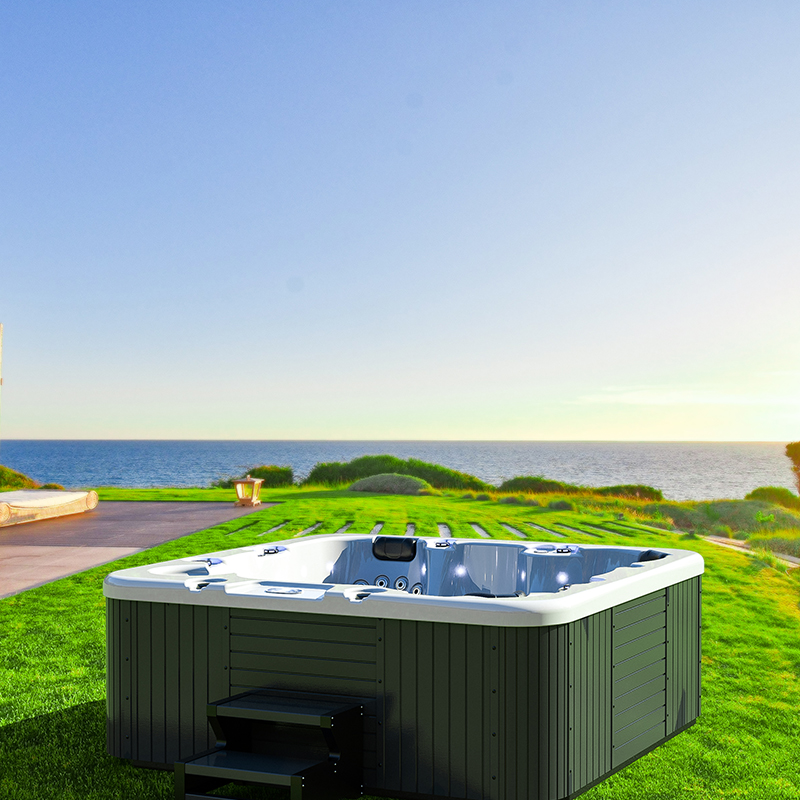
How to test the cyanuric acid content in the whirlpool spa tub?
Before deciding whether to drain the whirlpool spa tub, you must first determine the specific cyanuric acid content. Here are some common detection methods:
1. Use test reagents or test strips
There are reagents and test strips on the market that are specifically designed to detect cyanuric acid content. These reagents or test strips can quickly determine the concentration of cyanuric acid in the water through a color reaction. Typically, whirlpool spa users take a small sample of water and use a color chart to determine the cyanuric acid concentration.
2. Use a digital tester
A digital tester is a more accurate test tool that can provide a more accurate reading of cyanuric acid concentration. Compared to test strips or reagents, digital testers are usually more convenient and accurate, but relatively expensive. Users simply insert the test probe into the whirlpool spa water to obtain real-time cyanuric acid concentration data.
3. The importance of regular testing
Since cyanuric acid will gradually accumulate, regular testing is key to ensuring the water quality is balanced. It is generally recommended to test the cyanuric acid concentration of the whirlpool spa tub once a month, especially in the summer and when the outdoor tub is used frequently.
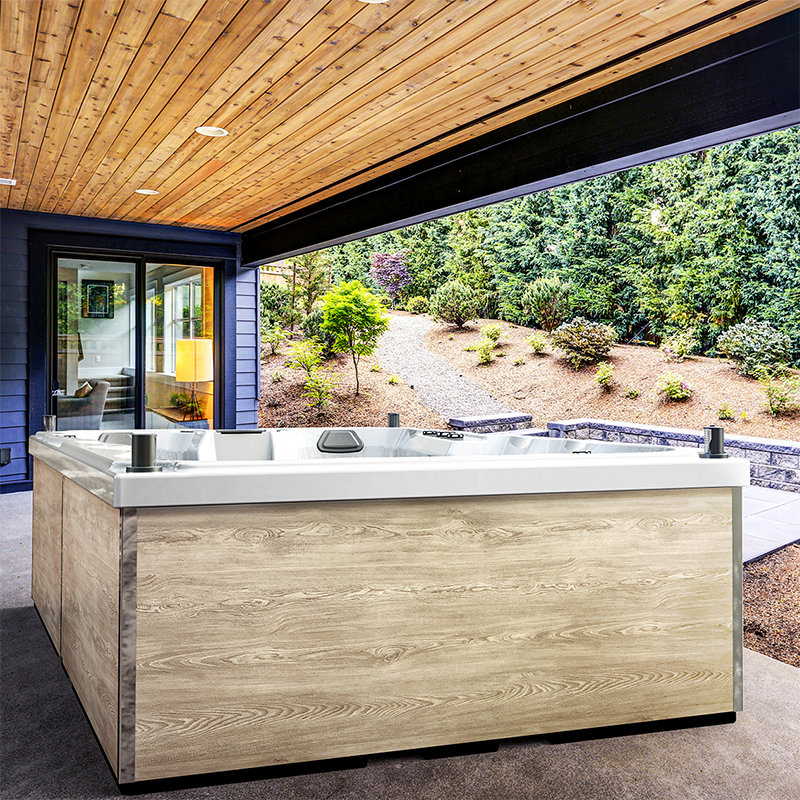
If the cyanuric acid level is too high, do you need to drain the whirlpool spa tub?
High cyanuric acid levels are a problem that cannot be ignored, but whether the whirlpool spa tub needs to be drained depends on the specific cyanuric acid concentration and the overall condition of the water. The following are treatment suggestions based on different situations:
1. Slightly high cyanuric acid content
If the cyanuric acid content of the whirlpool spa tub is slightly higher than 50 mg/L, but not more than 80 mg/L, a gradual adjustment can be made without draining the tub immediately. The problem of high cyanuric acid content can be alleviated by the following methods:
● Partial water change: Drain one-third or half of the water in the whirlpool spa tub and fill it with new water. This can dilute the concentration of cyanuric acid and gradually restore it to a safe range.
● Reduce chlorine content: When the cyanuric acid concentration is high, the amount of chlorine can be appropriately reduced, and other water treatment methods can be strengthened, such as increasing the filtration time or using an ozone generator to assist disinfection.
2. High cyanuric acid content (more than 100 mg/L)
When the cyanuric acid content exceeds 100 mg/L, the water quality is almost lost in disinfection ability. At this time, it is recommended to completely drain the whirlpool spa tub. Draining and refilling is the most direct and effective way to solve the problem of high cyanuric acid content. By completely replacing the water, the chemical balance of the water can be restored and the future chlorine disinfection effect can be ensured.
In addition, after refilling the whirlpool spa tub, it is recommended to use a chlorine preparation containing less or no cyanuric acid to avoid future high accumulation of cyanuric acid.
3. The importance of regular water changes
Even if the cyanuric acid level is within the safe range, regular water changes are still the key to maintaining healthy water quality. The water quality of the whirlpool spa tub should be completely replaced every 3 to 4 months, which will not only help maintain the balance of cyanuric acid, but also prevent other water quality problems from occurring.
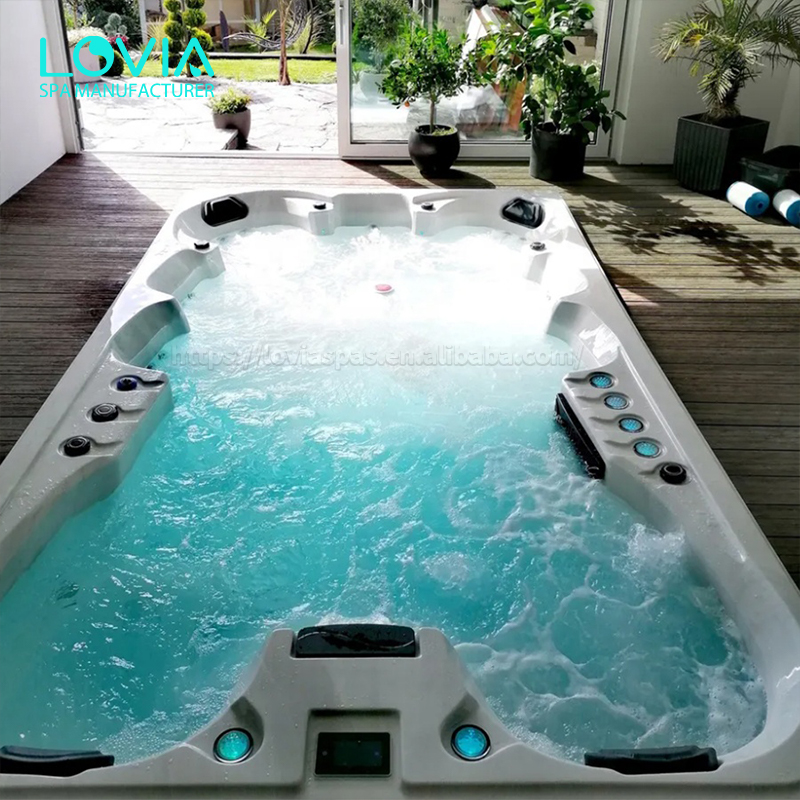
How to avoid high cyanuric acid levels in the whirlpool spa tub?
Preventing high cyanuric acid levels in the whirlpool spa tub is the key to maintaining healthy water quality. Here are some effective preventive measures:
1. Use chlorine preparations without cyanuric acid
Some chlorine preparations do not contain cyanuric acid, such as liquid chlorine or calcium hypochlorite. Using these chlorine preparations can avoid the accumulation of cyanuric acid, especially when cyanuric acid has reached the ideal range. Switching to chlorine preparations without cyanuric acid can help control cyanuric acid concentrations.
2. Control the amount of cyanuric acid used
When using cyanuric acid additives, be sure to follow the manufacturer's recommended dosage and avoid overdose. Cyanuric acid is usually added only when the water quality is adjusted for the first time, and there is no need to add it frequently later.
3. Regular dilution and testing
Even if there is no excessive cyanuric acid content, regular dilution and testing of whirlpool spa tub water quality is an effective way to prevent problems. Through partial water changes and regular testing, problems can be discovered and measures can be taken in time.
Where do you export to?
Our Lovia Spa products are shipped worldwide, including Europe, North America, Australia, the Middle East, and Southeast Asia. As a certified manufacturer with CE, ETL, SAA, RoHS, REACH, and ISO9001 approvals, we meet export requirements across major markets. We frequently partner with wholesale distributors, e-commerce platforms, and luxury housing developers, providing competitive quotes, bulk purchasing, and global logistics support.


